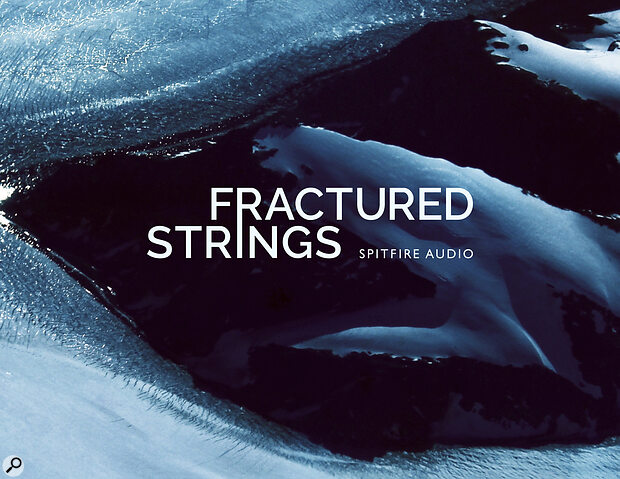Rating: **** 4/5 Stars
Built in collaboration with Hans Zimmer’s Bleeding Fingers Music collective and featured in the BBC’s Frozen Planet II, Fractured Strings features a chamber ensemble of eight string players, along with patches featuring violin and cello soloists. Hosted in Spitfire’s own dedicated plug‑in, it has 12 mic and three macro mix options, and also includes the useful Evo Grid featured in other recent releases. Aesthetically, the instrument is quite focused: from glittering and refracting textures at home in a Terrence Malick or Kieslowski score, to the deeply expressive and stark intervallic work of an Arvo Pärt piece, the deeply moody nature of this library is worth exploring.
Opening Fractured Strings in the minimalist Spitfire host application, one is greeted with more than an aesthetically pleasing frozen background: Spitfire’s new ‘scale mode’ is also there. This innovative and simple GUI allows users to conform performance patches to a scale or mode. So for instance, a patch such as ‘Cello Rotations Up’ — which features performances of icily expressive rising intervals — can be set to play all of its rising intervals within a customisable scale. While the mod wheel still controls dynamic levels, users can then vary the interval being played by using velocity, allowing the same chord pattern to sound from close to farther intervals without making a single change in fingering. Aside from being highly expressive and convincing, it is also a fun workshopping and aleatoric experimentation tool. The dynamic layers are very evocative, moving from warm pianissimos to icy borderline ponticello‑like fortissimos. The musical intent and intensity of the performances is palpable, and with a bit of patience the results can be breathtaking.
In a potential nod to the aforementioned Arvo Pärt, there are also nine available arpeggio performances for both solo violin and cello.
The techniques themselves are quite varied. We begin with 42 types of violin section ‘fractures’, where different chord types and evocative flourishes can be controlled with a speed parameter. There are 54 violin and 51 cello techniques available: these include statements (shorter phrases which move away and return to the same starting note), natural harmonic patterns moving away from a central note, rotations (this writer’s favourite, which are tempo‑sync’ed small phrase performances moving up or down), and seven varied trill options called ‘Dispersals’. There are also declamatory shorts (norm, harmonic and sul ponticello). Finally there are highly expressive ‘Reaches’ (a rise of a seventh with a passing tone), and several pizzicato strums. In a potential nod to the aforementioned Arvo Pärt, there are also nine available arpeggio performances for both solo violin and cello.
One wonders how Spitfire can continue to release the volume of projects that they are while maintaining their quality. And yet, with Fractured Strings, they once again bring a compelling library full of distinct personality into the virtual instrument world. This crystalline effort comes highly recommended for film composers, and those just looking to explore new sonic vistas.
£249
$299

